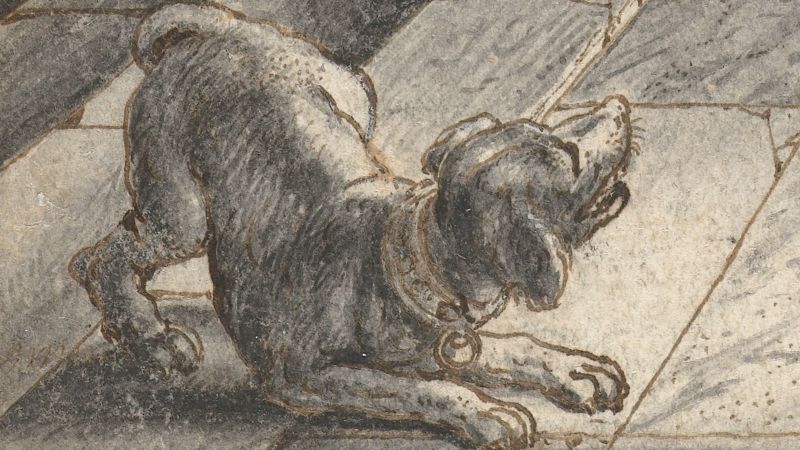Tweet
Email
Link
EDITOR’S NOTE: This article was originally published by The Art Newspaper, an editorial partner of CNN Style.
If the dog in one corner of Rembrandt’s “The Night Watch” painting looks a little out of place as the brave citizens of Amsterdam march out to defend the city — it is.
New research into Rembrandt van Rijn’s 1642 masterpiece suggests that this barking dog was inspired by the title page of a widely available book on the temptations of the flesh, illustrated by the Dutch artist, poet and publisher Adriaen van de Venne.
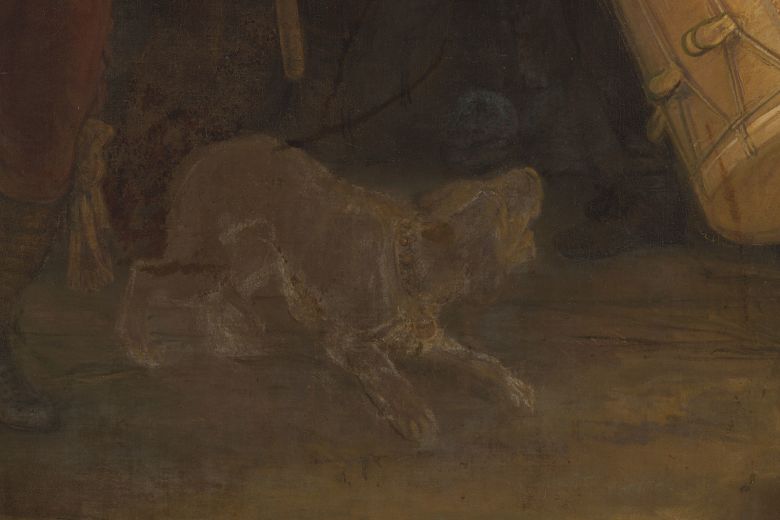
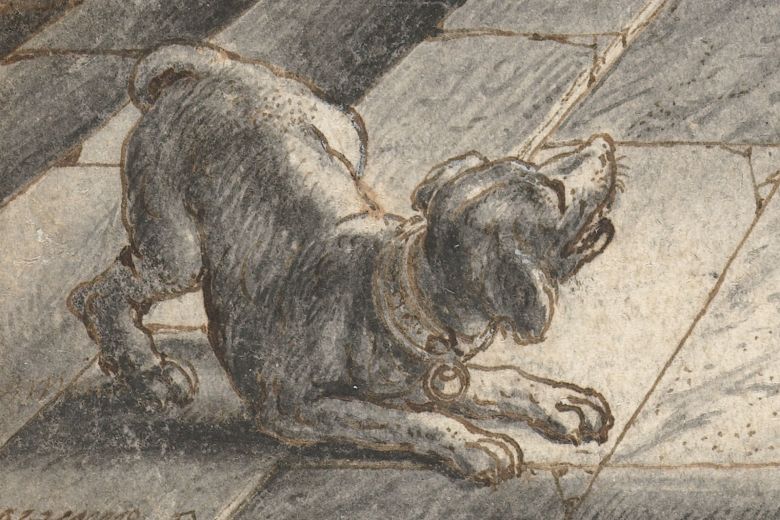
“The Night Watch” is currently being publicly restored inside a glass box at the Rijksmuseum in Amsterdam. The museum’s curator of 17th century Dutch paintings, Anne Lenders, said she realized the dog looked like the Van de Venne drawing when she visited an exhibition on the lesser-known artist at the Zeeuws Museum in Middelburg, the Netherlands, last year.
“As soon as I saw that dog, ‘The Night Watch’ dog came into my mind — I recognized it by the turn of the head,” she said.
Further investigation into a chalk underdrawing of ‘The Night Watch,’ using macro X-ray florescence scans, showed even more resemblances between the two dogs. In the final painting, Rembrandt, however, put his dog on all four legs and added a tongue to suggest to the viewer that it was barking at a massive drum.
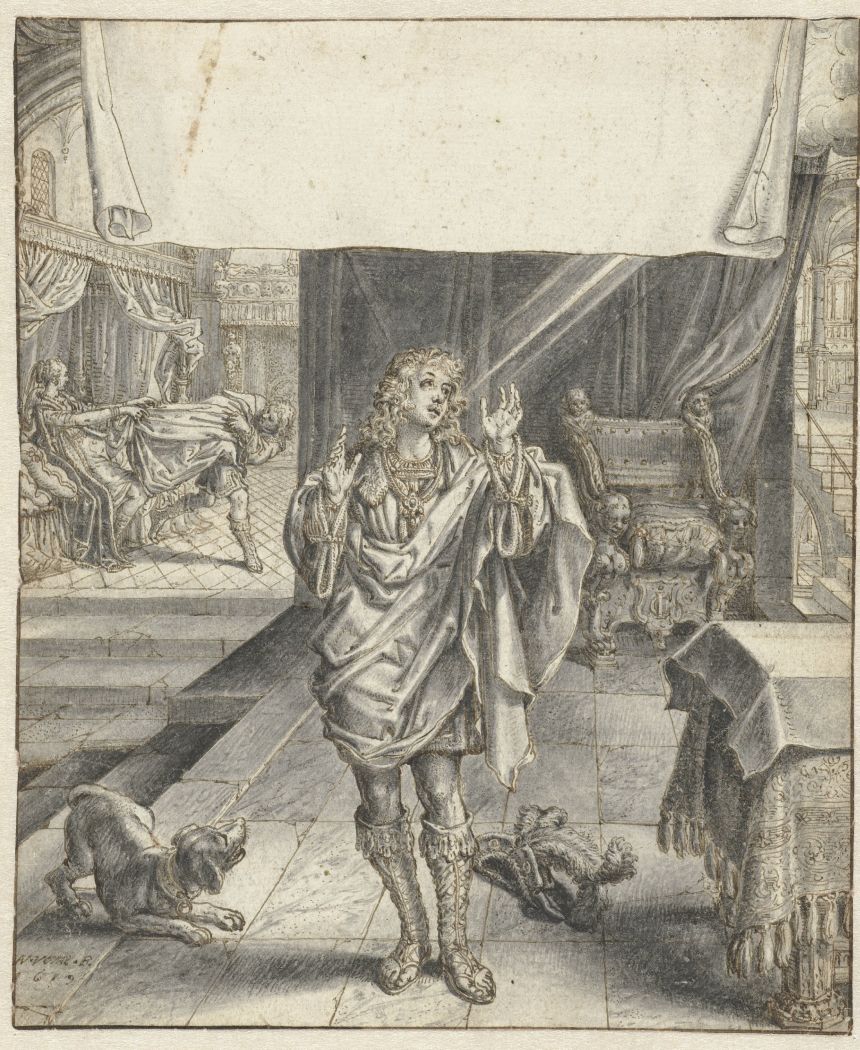
“It’s very clever how Rembrandt adjusted his dog, putting it in an active stance, vigilant and alert,” she said. “At any moment, his dog could run away, and this strengthens the living quality of the painting. It feels like something could happen at any moment and the dog plays a very important role.”
Rembrandt is known to have had a wide collection of Van de Venne’s prints, Lenders said. She added that a figure in the same illustration also resembles elements of another Rembrandt painting, 1655’s “Joseph Accused by Potiphar’s Wife,” which is held in the collection of the Gemäldegalerie in Berlin.
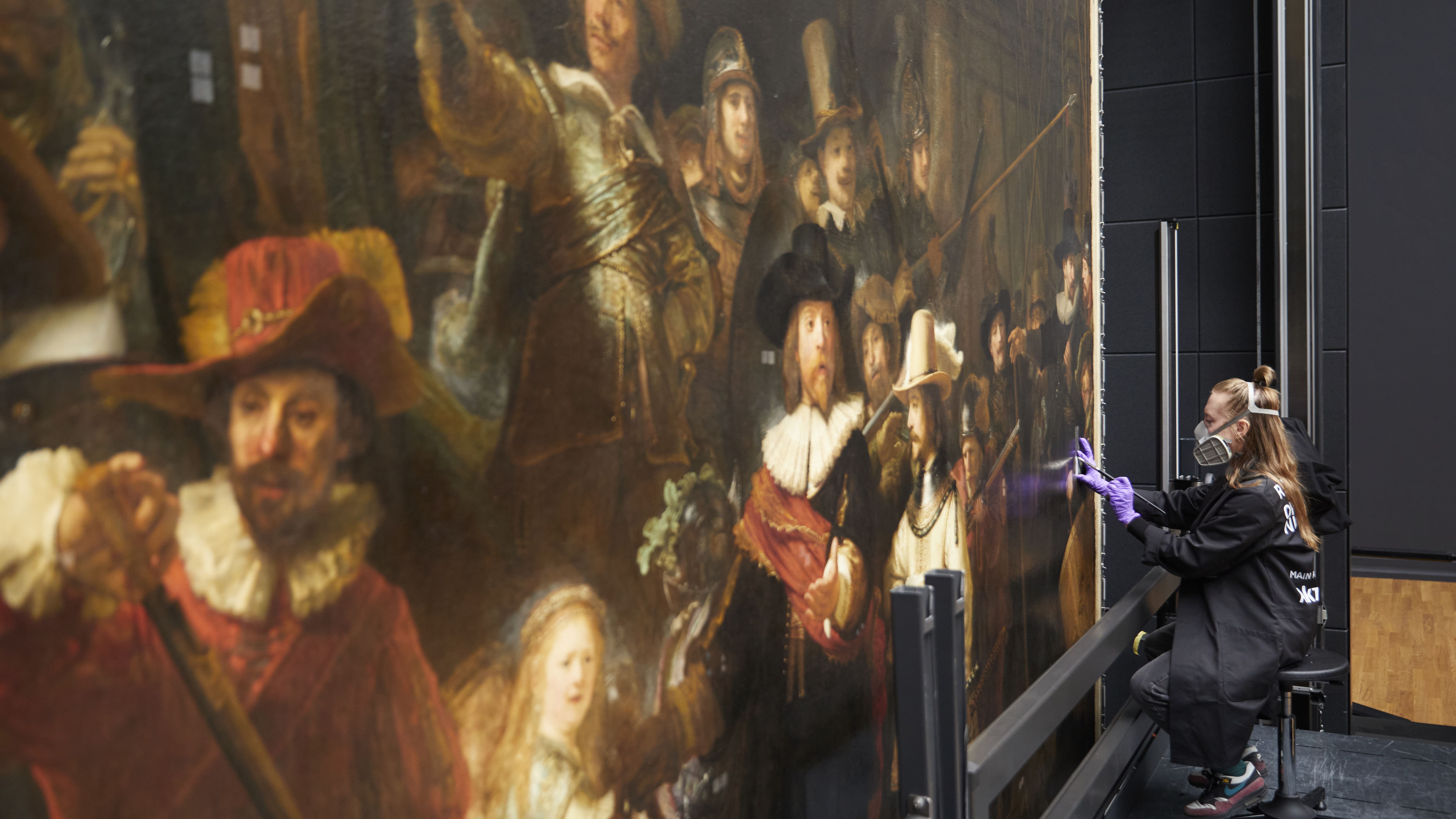
Related video: Rembrandt’s ‘The Night Watch’ is being restored, and the public are invited to watch

Related video: Rembrandt’s ‘The Night Watch’ is being restored, and the public are invited to watch
1:30
Taco Dibbits, the director of the Rijksmuseum, explained that what we might now call “copying” was both part of an artist’s training and a display of erudition. “He didn’t want people to call him Rembrandt van Rijn, but just Rembrandt, like Michaelangelo,” Dibbits said.
“And he really wanted, just like the Italians, to be that learned artist who based himself on prints from his predecessors, who could copy so incredibly well and know them so intimately that he developed them further.”
Read more stories from The Art Newspaper here.

